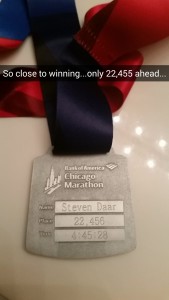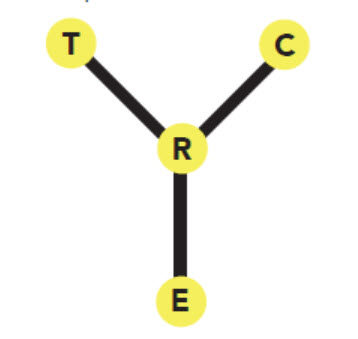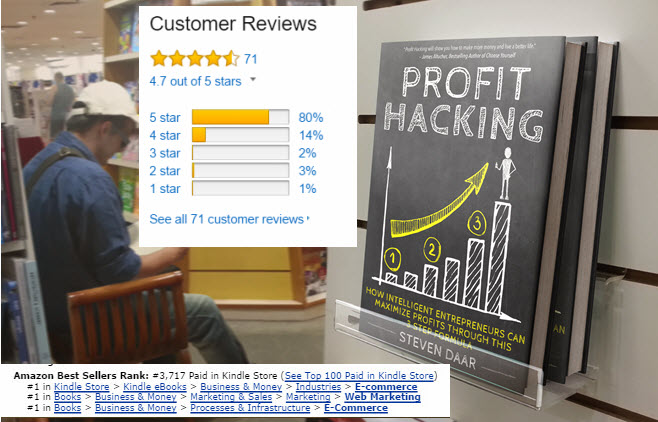Training for a marathon has a couple of great side benefits. One is that long distance running is an excellent form of meditation.
So far, I’ve been blessed to receive some clarity through dozens of miles run. Hopefully, this article will serve you by giving a glimpse into those insights.
Guiltless Desire
After an expansive weekend last month, I was lucky enough to bear witness to my friend David discuss an idea around guiltless desire.
The concept resonated deeply.
How often had I “made myself wrong” for desiring what I desired? Times I told myself that I wasn’t worthy of having it nor capable of creating it in my life. When I judged myself as strange or weak or broken for desiring some things while I judged myself as conformist or egotistical or unreasonable for desiring other things.
Add on top of that what I had learned through Buddhism and the “spiritual community”. The teachings that desire is at the root of all suffering.
But what if all if it is part of the human experience? What if the “desire” Buddha spoke of was the desire for anything to be different than it is exactly right now?
If you didn’t resist anything, you wouldn’t be feeling the want for anything to be different right now. Then you can access the perfection of the moment.
But by all means – – have goals. And dreams. And desires. Let them motivate you and inspire you and push you. Align your thoughts, words, intentions, state, and actions to match the level of passion you feel for the things you want to be, do, and have.
Own your desires. Never judge them as “good” or “bad”. Never apologize for them. In fact, the more you speak about them – – the more you will get them. That’s because others want to help you get your needs met and your desires filled.
But they can’t do it if they don’t know that is what you need or desire….unless your friends are mind readers or are immensely intuitive.
While you can drop your judgment of your desires (or any of your thoughts for that matter) as “good” or “bad”, there is another way to “judge” them that I recommend trying.
Label desires (or thoughts) as “useful” or “not useful”. Things pop into your mind all the time and they don’t necessarily have to mean anything bigger than the fact that they were a fleeting, passing thought.
If you think of something that doesn’t ring completely true to you and/or isn’t something you would like to expend any more energy (of any kind) on, then mentally label it as “not useful”.
The mind is an incredible tool with an insatiable capability to learn. Give it the inputs now that will create the future that you want. Telling your mental computer that something is “useful” will tell it you want more attention & focus on that thing moving forward. And vice versa.
Own your desires, align yourself with them fully, and watch your world change.
Need-Free Connection
This is something that is pretty new to me. Without even realizing it, I’ve been putting psychological and emotional hooks into people for as long as I can remember.
Even if I’ve just met that person, I want them to like me and think I’m funny and interesting and more. On some level, I latched onto them seeking signs of their approval.
This creates the dynamic where I “need” something from them. This creates an energetic demand on them and usually gives them a slightly uneasy feeling within themselves.
You probably know what I’m talking about on both sides of the equation.
While I wanted (and needed) compliments, to feel accepted, and to feel like there was a real connection…I wasn’t getting that very often.
Desire with need can often actually repel the thing you want.
Desire combined with an expectation of that desire becoming a reality while at the same time not needing it to happen can often be a huge attraction for the thing you want.
While I still have a lot of room for growth in this area, I’ve been feeling a lot more need-free connection in my life lately.
Strangers have complemented far more often and I’ve felt much faster and much deeper connections with others. I’ve even found that more people than usual approach me to start conversations than they used to.
I believe there are two things helping drive this shift:
One is that you can “cut the cords” that are trying to attach you (and/or your self-esteem, your worth, your approval, etc) to someone or something other than yourself.
Physically make cutting motions with your hands all around your body and visualize all the cords that have come from you trying to hook in to others being cut. Then visualize all the cords that have come from others trying to hook into you being cut.
Through “cutting the cords”, giving yourself the things you previously “needed” from others, giving everyone else the freedom to be themselves without wanting them to be any different, and by lovingly (but also assertively) setting boundaries + agreements for all your relationships are huge steps towards need-free connection.
The other is something you’ve probably heard hundreds of times but it’s worth hearing thousands of times because of how important it is.
That is that you have to love yourself more, accept yourself more, and be more connected with yourself if you want to increase the amount of those things you receive any of those things from others.
You can lead the charge by loving and accepting yourself first, thereby giving others a shining example of how to interact with you & treat you.
You must give to yourself in order to receive from others.
Speaking of….
You Must Receive In Order to Receive
Early in my entrepreneurial career, I heard a few people I trusted tell me that I had to give in order to receive in business and in life.
Successful entrepreneurs often cited that their giving spurred a significant amount of their success (and ergo their receiving).
Whether it was giving of their time, their money, their expertise / skills / abilities, or something else – – they were passionate about giving.
So that’s what I did. I started giving.
I gave a percentage of revenue to charities. I volunteered my time to tutor grade school students of the Chicago Public School system. I gave ideas and hours of consulting and other bits of my expertise away for free. I gave paperback copies of my book out for free (which means that not only was I giving something away for free, I was actually losing a couple bucks per book).
And I was pretty much always struggling. I was giving and giving but my bank account wasn’t seeing the supposed positive side effect of the giving.
This whole time, I had massive issues with receiving. In all forms.
If you wanted to give me a compliment, I wouldn’t accept it by saying “thank you” and deeply appreciating that someone else not only saw me but was compelled to speak to it.
Instead, I’d play it off or play it down or deflect it in various ways.
And despite me thinking and saying that I wanted more money, I turned money down at so many different opportunities. People wanting to pay me for my time or my expertise or my book and I said that I was happy to help for free.
Which people think they like but it really ends up creating a pretty messy dichotomy. People (myself 100% included) often do not respect what they get for free.
Even if what they got for free was amazing, implementing it more often than not falls to the bottom of the priority list because there was no investment behind it. There was no energy or thrust behind it.
But if people pay for something, then they are far more likely to take it seriously and see it through.
And people usually don’t like to feel like they took advantage of someone or were unable to reciprocate by providing you a roughly equal amount of value in return.
Money is a great way to give a roughly equal amount of value in exchange for what you’re getting. When you give something away for free, the other person may feel some form of guilt over not being a part of a “fair” transaction.
You can let money simply be a “test” to see how committed people are to getting the results that you can bring them. If they don’t want to pay you what you charge, then they weren’t ready to commit at the level that you’re going to commit to them.
There is likely an endless (and constantly replenishing) number of people who are ready to commit at a level equal to (or even greater than) what you bring. Those are when you’ll have the most enjoyable customer/client relationships and where the best results for all parties involved come from.
In order to receive, you must practice receiving.
Once you have no blocks to receiving, then giving is a great way to increase the amount getting back in return.
Imagine if you kept ordering stuff from Amazon every few days but you had a mile of barbed wire, 15 foot concrete walls, alligator infested moats, and a small army that stopped anyone and everyone from getting to your home.
No matter how many packages you order, you’re never going to receive any of them. Maybe the occasional rogue UPS driver who has a passion for living dangerously can get you a couple of the things you ordered but you’re definitely getting a lot less of the things that you could be getting.
Take down the walls, send home the militia, chase away the gators and all of the sudden all these wonderful things that were supposed to get to you start showing up “magically”.
If you didn’t know better, you’d think that the whole world had a meeting and decided to start being a lot nicer to you.
As you remove your barriers to receiving, you are taking “friction” out of the process that must be gone through in order to give you something.
In conversion optimization, we consider friction anything on a website that makes it harder for the person to take action.
Maybe the price is too high or maybe the site doesn’t function very well or maybe you force visitors to register on your site before they can make a purchase – – but whatever it is, there are unnecessary barriers between a visitor doing what you want them to do on your site (buy, subscribe, sign up, contact you, etc).
By removing the barriers, you make it easier for others to do what you want them to do on your site and grow the revenue your business earns via your website(s).
Check in with yourself to see how well you receive and if you have constructed any obstacles that makes it harder for others to give to you. See if you have any judgments around receiving being in some ways “worse” than giving.
“Receiving” is as natural and pleasurable and honorable and as whatever other good attributes you pin on “giving”. You must receive in order to receive.
Think Bigger, Then “Teleport” to Get to That ‘Bigger’
Your life is constrained first by the size of your imagination and second by your level of courage in going after the dreams & goals created by your imagination.
You will never grow unless you try to do something beyond the current barriers of your comfort zone.
Something interesting happened to me when I started diving into personal development stuff:
I thought I had to dive inside and “fix” everything. Everything bad or dark or wrong had to be ripped out. Everything that kept me small or afraid or weak had to eradicated and eliminated forever.
And I certainly was successful in releasing and processing a lot of emotions and issues that been stuck inside of me.
But I am now convinced that the “success” wasn’t necessarily a result of going “back in time” and trying to uproot old beliefs and ways of being that no longer served me.
Instead, the success came the moment I decided what I would like to replace those things with and then commit to being and doing those things.
I just learned that the original definition of the word “habit” actually referred to a garment – – an article of clothing. That made all the sense in the world to me.
Just like you can choose your clothes, you can choose your habits. Your habits are quite literally clothing that is “worn” by your personality. You have them because they fit you. They fit your current self-image and personality pattern.
Your habits and your self-image go hand-in-hand. When we consciously develop new & better habits, our self-image will outgrow the old ways of being that came with those old habits.
Successful change, growth, and development happens when we make a conscious decision about how we want to be – – and then reinforce that decision through consistently acting in a way that is aligned with what we decided we wanted.
If, starting now, you paid all of your attention, awareness, focus, thoughts, words, and actions in the direction of what you want, there is no need to “remove” or “kill” the old things you no longer want in your life.
Old habits and old ways of being don’t have to die hard. They can simply “starve” themselves away naturally as you focus more and more of your energy & resources in the direction of what you do want.
You can take a jagged, squiggly line from ‘Point A’ to ‘Point B’ or you can take a straight line. The straight line is the fastest path, right?
What if you could get rid of the “line” completely but simply teleporting from A to B?
A recent TED talk I watched called “The Anatomy of Results” made the argument for “Intention” and “State” being more important than “Action” for getting results.
At first I was skeptical but then it began making sense. Two different people can take the same action (they can say and do the exact same things) but get completely different results.
One person may come in with the intention of trying to get something from the other person and a defeated state where they lack confidence in their ability to get what they want.
The other person may come in with the intention of trying to give something to the other person & help them and with a powerful state of confidence that they can create & serve.
You can begin teleporting to the life that you want by transforming your habits to “fit” the type of person you need to be in order to have what you want.
You can begin teleporting to the life that you want by deciding who you want to be and then acting in a manner consistent with that new self-image.
You gotta be before you can do and you gotta do before you can have.
The doing reinforces the being. The doing gives your more experience, more feedback, more results, and more confidence in your ability to be the person you decided to be.
Then you likely are able to expand your imagination even further for what is possible for you to achieve, to accomplish, and who you can be. Then you likely are able to exercise courage more consistently in going after the things you want to be, do, and have.
There very well may be nothing except for some false, limiting beliefs in the way of where you are and where you want to be.
You could teleport in an instant (even this instant) to completely being the person that you want to be. And you could completely transform your habits so that you would consistently be doing things in alignment with who you want to be. And from there, it’s only a matter of time before you have what you desire.
Of course, most people opt for linear growth (whether that line is squiggly or straight) over radical, transformative growth. I know that up until this point of my life – – that is the path I’ve taken.
And if that path is working for you right now, perfect. Improving 1% per day is a wonderful way to grow (especially because compound interest will eventually take hold and make things really exciting).
But I hope reading this expanded your imagination for what kind & speed of growth is possible if you cultivate the courage to go after it.
I invite you to, like an article of clothing, try on this method of growth.
I invite you commit to responding positively & aggressively towards every challenge as well as every opportunity to reinforce to yourself (and to the universe) that you’re serious about the new you that you’ve decided to be.
That you’re serious about getting everything in life that you desire.
Guiltlessly, of course.
















